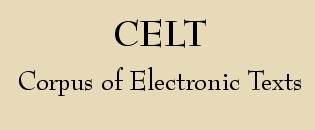The set of texts that became known as the Trotula in later medieval Europe has a rather complex history. For a long time, it had been debated whether the author to which the work was ascribed, Trocta or Trota of Salerno, even existed. Some argued that this woman, immortalized by Chaucer as 'Dame Trot', was a fiction. However, by the time Wulff edited her Medieval Handbook of Gynaecology and Midwifery in 1934, a consensus had been established that Trocta was historical and that she may have been from Salerno. As recent research has concentrated on the many transformations which various Salernitan texts on midwifery, health and cosmetics underwent, before they became known as the Trotula, it has also emerged that Trocta or Trota, the presumed author, was not the sole author of the tracts later ascribed to her. Monica H. Green, who has published widely on the topic, published an authoritative edition and translation in 2001. It contains a wealth of detail on the genesis and interrelationship of those texts which remains beyond the scope of the present summary (derived from pages 51–56). References are given at the foot of the page.
Professor Monica H. Green has kindly made available to us a concise document explaining who or what Trotula
is. It is available here.
(p. 51) There are 126 extant manuscripts of the Latin Trotula all over Europe—only a small part of what must have been in circulation between the end of the 12th and the middle of the fifteenth century. They combine the Salernitan works Conditions of Women (Tractatus de egritudinibus mulierum) and a re-worked version, Treatments for Women (De curis mulierum).
(p. 54) The Trotula ensemble proper was probably first created in the late 12th century, for we find manuscripts of it from the turn of the century. Its compiler compared the third version of Conditions of Women with a copy of the second version of Conditions of Women to check readings and fill in the missing text, especially the section on contraceptives. He added several sections, e.g. that about the development of the fetus, which is taken from a work on embryology, Gynaecia, attributed to Avianus Vindicianus (late 4th century AD). The part on care of the newborn child and choosing the right wet nurse are derived from a large medical work by Rhazes entitled Liber ad Almansorem. A section on pustules in children, whose source has not been identified, was also added. [All these are included in the Irish version.] The last three sections of the expanded Conditions of Women on sterility in men and women are taken from a work by Copho of Salerno. Although it did not contradict the other material in Conditions of Women, the new material took the emphasis away from the sufferings of women, directing it more towards child bearing and child rearing.
(p. 55) While both Conditions of Women and Women's Cosmetics were anonymous, this first text that can be regarded as an ensemble mentions Trotula as a name. 'In a fashion that was not uncommon with other medical texts, the compiler dubbed the collection 'the Trotula', that is, forming a title out of the presumed author's name, Trota.' This title was later erroneously taken as the author's name.
(p. 56) Around the mid-13th century the texts took the form of what Green calls a 'standardized ensemble' which did not contain 'substantive additions or deletions' as had been the practice before. Its text was 'entirely identical to the revised ensemble', but differed in style and turns of phrase.
As to the Irish context, if the translation is from around 1352, it derives most probably from a Latin text that belonged to the standardized ensemble. This becomes clear from a number of late additions contained in the text on which the translation was based (about the development of the fetus, its food, and choice of the right wet nurse). Of special interest might be the phrase 'sechnad comrad borb no cichanach air' on p. 46 of the Irish version). In the standardized ensemble of the Trotula, in the section about care of the newborn, the editor used the word 'Lombardis' in the sentence: 'ante eum non est asperis vocibus cantandum neque raucis, sicut Lombardis.' This word was later corrupted to the meaningless 'bombardis', which resembles the Greek loanword bombus, 'noise'. Did the Irish translator have 'bombardis' before him and tried to guess at the meaning, rendering it as 'borb'?
As Wulff could not identify the Latin manuscript, she had at her disposal the Latin text of a printed edition published in 1586, ascribed to Eros. Green mentions an incomplete Latin manuscript in Trinity College Library, MS 3528/37, dating from the middle of the 13th century. Wulff does not mention this in her search for Latin sources of the Irish text, although she cites the scribe's colophon in the text on Grades in RIA 23 F 19, which precedes that on Wounds, as stating: 'I have here collected rules of practice, i.e. of surgery, for the honour of God, for the betterment of the Irish people, for the benefit of my pupils, and for the love of my friends and my kindred. I have translated them from Latin books into Gaelic.' It is thus open to speculation (and deserves to be probed) if the manuscript in Trinity College could have served as a base for this translation. However, there are problems. First, there is a major gap before the Trotula text follows, secondly Trotula or Trota is not mentioned by the scribe; third, the Latin manuscript is incomplete.

